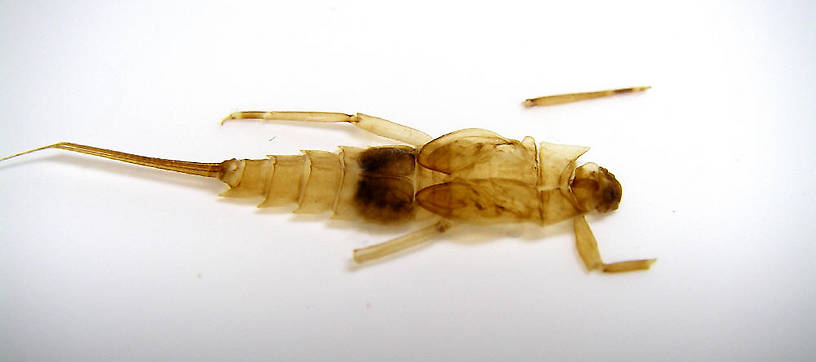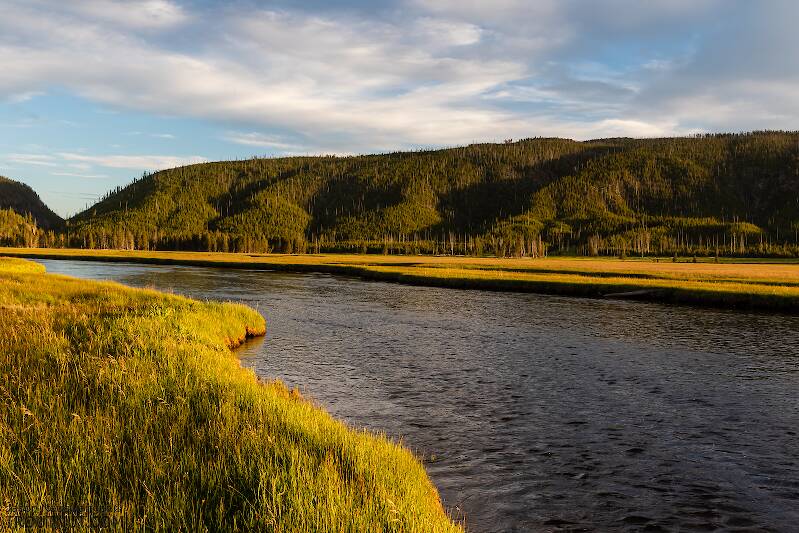
Hex Mayflies
Hexagenia limbata
The famous nocturnal Hex hatch of the Midwest (and a few other lucky locations) stirs to the surface mythically large brown trout that only touch streamers for the rest of the year.
Featured on the forum

Troutnut is a project started in 2003 by salmonid ecologist Jason "Troutnut" Neuswanger to help anglers and
fly tyers unabashedly embrace the entomological side of the sport. Learn more about Troutnut or
support the project for an enhanced experience here.
Mayfly Genus Neoephemera
To my knowledge, nothing has been written in the angling literature about this rare genus of relatively large mayflies.
Where & when
Neoephemera seems to be most common in the Southeast, although there are scattered distribution records across parts of the Midwest and Northeast. The one specimen on this site hatched in mid-late May.In 3 records from GBIF, adults of this genus have been collected during June (67%) and May (33%).
In 9 records from GBIF, this genus has been collected at elevations ranging from 1220 to 2546 ft, with an average (median) of 2188 ft.
Genus Range
Nymph biology
Neoephemera mayfly nymphs look like overgrown Caenis nymphs, with the characteristic operculate gills protecting their other gills from silt.Specimens of the Mayfly Genus Neoephemera
1 Nymph

This specimen was sent to me for identification by Caleb Boyle, who did such a good job taking pictures of his mystery mayfly that, after identification, I asked him for permission to add it to this site, which he granted. This is great luck, since Neoephemera is a rare mayfly and it's unlikely I would ever have collected a specimen for the site myself.
Caleb collected it in mid-late May of 2004 either McDowell County or Ashe County in North Carolina, in a riffle less than two feet deep in a cold trout stream. He reared the nymph into a dun, whose wings appear in one of the photos below. He describes the specimen as follows:
Nymph exoskeleton:
Body: 16-17mm
Tails: 3, equal length, 13mm
Found on the surface of the water. The gill cover covers ab. segments 3-5.
Subimago:
Body: 16mm, dark brown/ olive
Tails: 3, equal length, 14mm
Wings: dark slate color, large hind wings.
I don't know to which species it belongs, but its size rules out the most common one in the genus, Neoephemera bicolor. It matches the size of Neoephemera purporea so that is a likely other possibility, but there are two other candidate species (Neoephemera compressa and Neoephemera youngi) about which I have no information, so I can't rule them out.
Disregard the camera, region, and exact date listed on these photos. I still need to update the site to accommodate user contributions which don't use my equipment.
Caleb collected it in mid-late May of 2004 either McDowell County or Ashe County in North Carolina, in a riffle less than two feet deep in a cold trout stream. He reared the nymph into a dun, whose wings appear in one of the photos below. He describes the specimen as follows:
Nymph exoskeleton:
Body: 16-17mm
Tails: 3, equal length, 13mm
Found on the surface of the water. The gill cover covers ab. segments 3-5.
Subimago:
Body: 16mm, dark brown/ olive
Tails: 3, equal length, 14mm
Wings: dark slate color, large hind wings.
I don't know to which species it belongs, but its size rules out the most common one in the genus, Neoephemera bicolor. It matches the size of Neoephemera purporea so that is a likely other possibility, but there are two other candidate species (Neoephemera compressa and Neoephemera youngi) about which I have no information, so I can't rule them out.
Disregard the camera, region, and exact date listed on these photos. I still need to update the site to accommodate user contributions which don't use my equipment.
Start a Discussion of Neoephemera
Mayfly Genus Neoephemera
Taxonomy
Species in Neoephemera: Neoephemera bicolor, Neoephemera purpurea
2 species (Neoephemera compressa and Neoephemera youngi) aren't included.


